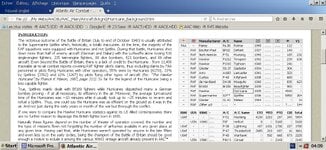PierreDeveaux
Airman
- 24
- Nov 12, 2024
Thanks Greg.Yeah. Early on, there were more Hurricanes. But, in the end, they built about 14,500 Hurricanes and a little over 20,000 Spitfires.
An extra 6,000 Spitfires ought to more than compensate for getting to the fight a small bit later than the Hurricane. At least, it seems that way to me.
We however are alien to any "challenge mode" (which is the best, bigger, etc). When reviewing any given aircraft, the only questions on the table are:
1. Is it consistent with the chosen geographical, historical and 1963-1967 fictional AAC™ framework ?
2. If not, is there good enough a reason for a "cheat-pick" (eg: a funny design like the 1938 Canadian FDB-1 Gregor to illustrate "late bi-planes"
but one of my partners brought much worse than that !)
These already are enough the source of ... interesting debates.
Working on a potential seaplanes update, I spotted a Hawker Hurricane seaplane project (part conversion of #N2599) which lead to scrutinize the type in general and triggered a "background note" briefly setting the Hurricane in perspective. Not in "challenging mode" however as it being inferior/superior to this or that isn't relevant. What might be relevant is its WWII use from carriers (thanks the previous suggestion to check with Armoured Aircraft Carriers in World War II) an overlooked detail adding meat to chew and possibly granting a "cheat-pick" among various vintage a/c outside AAC™ framework.
This background note of mine merely offers a condensed RAF based perspective - I just wished similar FAA data would have been available to widen the perspective.
Friendly regards,
Pierre Deveaux

